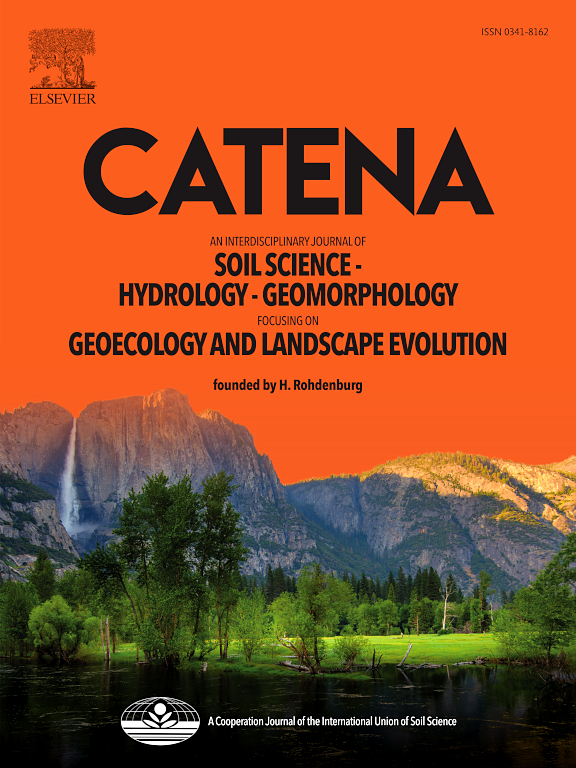The spatiotemporal variations of global rainfall erosivity and erosive rainfall event based on half-hourly satellite rainfall data
IF 5.4
1区 农林科学
Q1 GEOSCIENCES, MULTIDISCIPLINARY
引用次数: 0
Abstract
At present, station observation data are widely utilized for rainfall erosivity estimation while the spatiotemporal coverage of the data is limited. High-resolution satellite precipitation data offer the possibility of estimating rainfall erosivity with global coverage in a real time manner. A few studies have attempted to use satellite precipitation to derive rainfall erosivity and found that satellite data systematically underestimate rainfall erosivity compared to station observations. Thus, a Global Erosive Rainfall Database (GERD) was constructed using half-hourly satellite rainfall data from 2001 to 2020. Rainfall erosivity was calculated using the rainfall erosivity estimation method in RUSLE2 and bias corrected by a station-based annual average rainfall erosivity map. Then, the spatiotemporal variations of global rainfall erosivity and erosive rainfall event are revealed. The results showed that: (Ⅰ) The 20-year average rainfall erosivity was 2,538.6 MJ mm ha-1 h−1 yr−1. The 20-year average number of erosive rainfall events was 67 events per annum. (Ⅱ) There has been a discernible downward trend in the global rainfall erosivity anomaly from 2001 to 2020, with an average change rate of –22.09 MJ mm ha-1 h−1 yr−2, particularly pronounced in the Southern Hemisphere, where the decline rate reached −68.21 MJ mm ha-1 h−1 yr−2. In contrast, the number of erosive rainfall events has exhibited an upward trend during the same period. (III) Seasonal rainfall erosivity and number of erosive rainfall events during the period of June to August were obviously different from other seasons. On 34.1 % and 24.6 % of the global area, rainfall erosivity and number of erosive rainfall events in this period constituted more than half of the whole year.
求助全文
约1分钟内获得全文
求助全文
来源期刊

Catena
环境科学-地球科学综合
CiteScore
10.50
自引率
9.70%
发文量
816
审稿时长
54 days
期刊介绍:
Catena publishes papers describing original field and laboratory investigations and reviews on geoecology and landscape evolution with emphasis on interdisciplinary aspects of soil science, hydrology and geomorphology. It aims to disseminate new knowledge and foster better understanding of the physical environment, of evolutionary sequences that have resulted in past and current landscapes, and of the natural processes that are likely to determine the fate of our terrestrial environment.
Papers within any one of the above topics are welcome provided they are of sufficiently wide interest and relevance.
 求助内容:
求助内容: 应助结果提醒方式:
应助结果提醒方式:


